7 things to know about the iPhone 17's Center Stage selfie camera — and how it'll change your snaps forever
Shortlist spoke to Apple's Vice President of Camera and Photos Software Engineering, Jon McCormack, and iPhone Product Manager, Megan Nash, about the iPhone 17's Center Stage camera and what it took to deliver one of the best smartphone innovations in years...


The iPhone 17 range: Ranked and rated
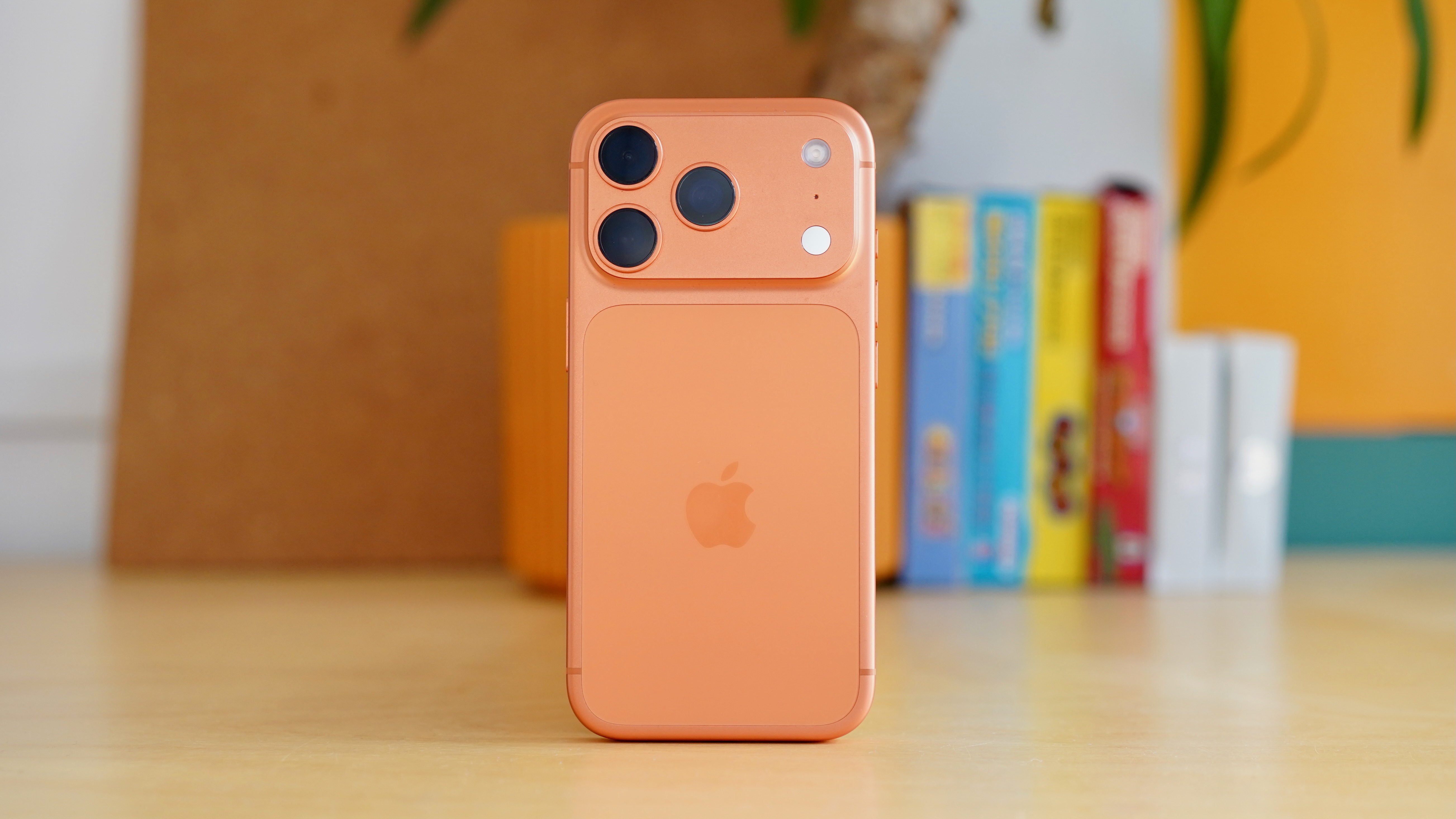
- Apple iPhone 17 review: One month with the company’s best 'cheap' phone in years — and the one you should buy
- iPhone 17 Pro and iPhone 17 Pro Max review: Power, poise, and practicality from Apple’s boldest flagship in years
- iPhone Air review: Apple’s cutting-edge is a slimline peek at the future of iPhone
Five hundred billion selfies. In one year. We're just going to let that sink in for a second, because while we love a selfie, that does feel like a lot, especially when you consider that it only includes those shot on iPhone.
Five hundred billion.
Once you realise how many selfies are taken however, it becomes much less surprising that one of the headline features of the new iPhone 17 models is their front camera. Jon McCormack, Apple's Vice President of Camera and Photos Software Engineering sat down with Shortlist to talk about it's innovative development.
"iPhone is a very social camera, and this is especially true of the front camera," he told us.
"It's how we express ourselves, how we share our point of view, how we record our precious memories". But he also said Apple has "learned a lot about how people take selfies over the years" and it's this that's key.
With that knowledge, Apple created a front camera experience on its new iPhones that was fresh, innovative, and crucially, one that its rivals hadn't managed to offer first. The new Center Stage front camera on the iPhone 17, iPhone 17 Pro and iPhone Air, is designed to "remove the effort and to make the experience seamless, to keep you in the moment, and let the technology work harder for you", Jon told us.
Here's an in-depth look at seven elements defining this new front camera experience and what they mean for your next selfie.
Get exclusive shortlists, celebrity interviews and the best deals on the products you care about, straight to your inbox.
1. Removing the effort
The entire design philosophy of the new Center Stage camera on the iPhone 17, iPhone 17 Pro and iPhone Air revolves around eliminating the workarounds users previously employed to get the perfect shot of themselves, or themselves and their friends.
No settings, no distraction, just pull out your iPhone, and let the new Center Stage front camera do all of the work for you.
Jon McCormack, Apple Vice President of Camera and Photos Software Engineering
Jon noted that users were constantly "trying to make the camera work for them," resorting to tools like selfie sticks, switching to the ultra-wide camera, "handing the phone to the tallest person in the group to get the best arm extension", or the simple but awkward rotation of the phone to horizontal. The question Apple posed was therefore simple: "What if the camera could just understand what you're trying to capture and make adjustments for you?"
This led to the new Center Stage camera that lets you hold your iPhone naturally, which is vertically, as "most people hold iPhone vertically" Jon told us, while the camera handles the complex framing and orientation adjustments. He added that Apple "set out to remove the effort and to make the experience seamless, to keep you in the moment, and let the technology work harder for you".
The ability to capture photos and videos, "either portrait or landscape, all while holding iPhones vertically," is the most visible way the camera is designed to keep you present and focused on the memory, not the settings. By making the experience "easier and more delightful to take selfies," the goal is simple, Jon said, "no settings, no distraction, just pull out your iPhone, and let the new Center Stage front camera do all of the work for you".
2. Room for your pals
The Center Stage camera also solves the classic group selfie issue by intelligently framing the shot to include everyone who is meant to be there. This feature operates by detecting "attention patterns", Jon told us, where the system wants to see that people are "intentionally in the shot". When a group is detected, the camera automatically adjusts the crop and orientation.

The system is fine-tuned to react smoothly and intelligently, Jon explained: "If you've got two people, it'll auto zoom to fit them perfectly. Three or more, it can actually auto rotate the camera to landscape while you're still holding the phone vertically."
Making this feel natural was one of the biggest challenges, Jon told us, requiring "months tuning parameters". He said this was to ensure the camera was "responsive, but not twitchy", adding if "someone just walks by in the background, you don't want the camera reacting but the moment your friend leans into the shot, we want to adjust smoothly and frame them".
3. Squaring it up
The fundamental enabler of the Center Stage front camera's clever features is its square sensor. Apple's iPhone Product Manager, Megan Nash, explained that because traditional 4x3 sensors are designed primarily for photography, they limited the experiences the team wanted to create for the new iPhone's front camera, which is now used equally for "communication, content creation, [and] staying connected", she told us.
To achieve the "orientation agnostic experiences" Apple desired, Megan said the company made the decision to use a square sensor, acknowledging that these "aren't common in the industry, they're more expensive [and] they take up more silicon area". The advantage however, is that the square shape provides data in both the vertical and horizontal axes equally.
Jon told us when you want to go wider for a selfie, there are two reasons why. He said you may want more people in the frame (horizontal) or more of a landmark or cityscape (vertical). The square sensor accommodates this need for a "really good long axis" in both directions. Megan then added that the square sensor also means that "for the first time ever, [Apple] have uncoupled the orientation of your phone and the aspect ratio of your capture".
4. Pixel for pixel
In order to fit more friends in the shot, or more of a background, Apple needed to expand the field of view for the front camera on the new iPhone models. But with that comes a common challenge in that a wider field of view often results in lower image quality. That's not the case with the new Center Stage camera on the latest iPhones, however.
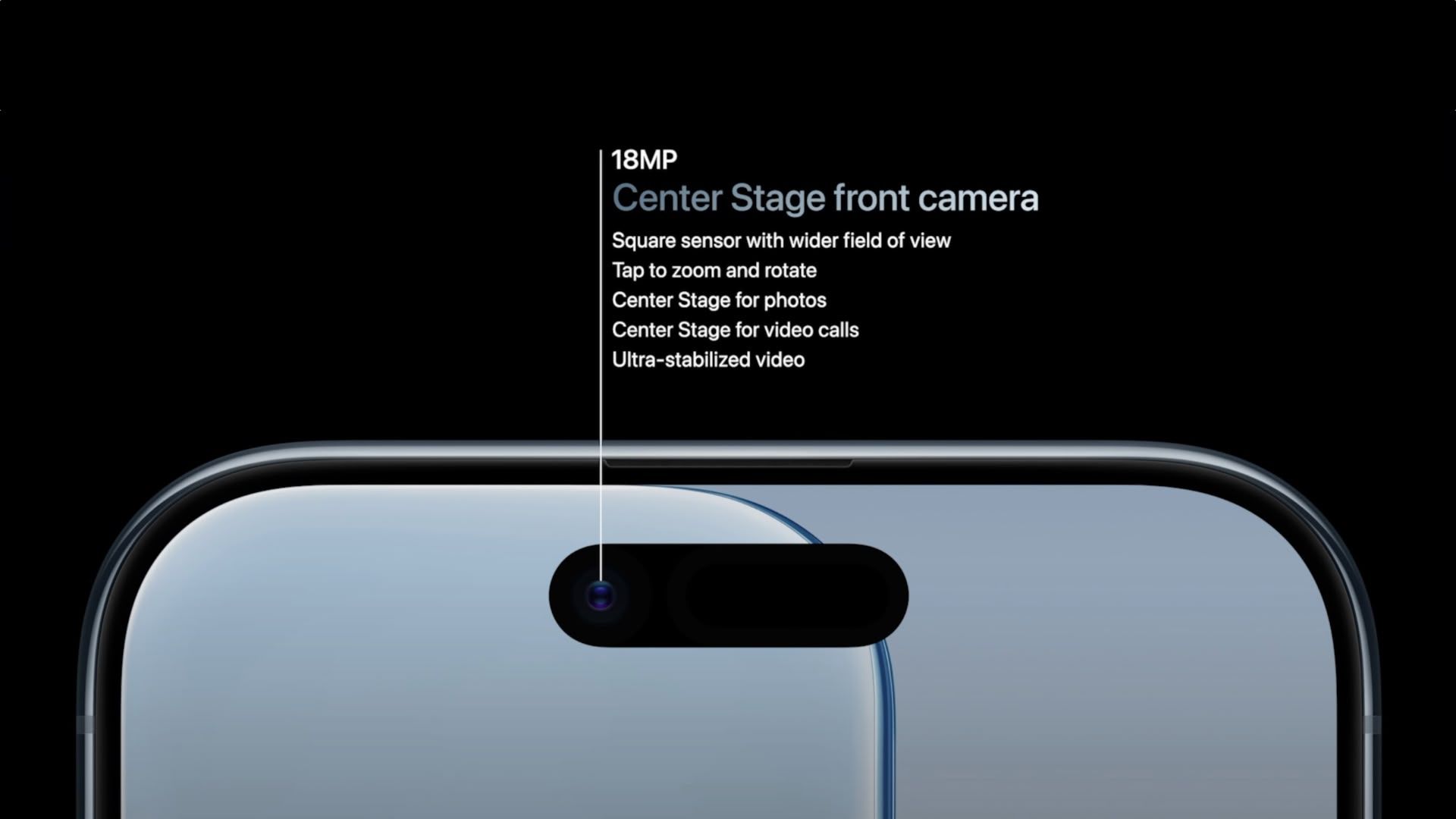
Megan told us that with more field of view, usually you get "unwelcome distortion and poor image quality by spreading out more pixels over the same sensor area". To ensure the new Center Stage camera delivered both a wider field of view and "excellent image quality", Megan said Apple "grew the sensor to almost double the previous sensor size to match pixel for pixel sharpness". This decision ensured that the new Center Stage camera retains "the exact same number of pixels per degree field of view as the previous front camera", Megan explained.
The larger sensor also has a boost in resolution, offering up to "18 megapixels so users get more detail and have even more options to crop every frame".
5. Super stable video
The new Center Stage camera also tackles the challenge of capturing smooth video while moving, something that's critical if you're one of those walk and talk on video kind of people. We don't love you by the way, but you'll probably love this feature.
You can walk, bike, run, or just not pay attention and know that your video is gonna be great.
Jon McCormack, Apple Vice President of Camera and Photos Software Engineering
In order to make capturing smooth video while moving a possibility on the new iPhone models, Megan told us the development team was able to "leverage innovation and learnings from Action Mode on the rear camera", bringing that stabilisation technology to the front for the first time. Action Mode was first introduced with the iPhone 14 back in 2022 for those that haven't used it.
In terms of how it works on the new Center Stage camera, Jon explained that the new system uses the bigger sensor to create stability by utilising a "large over scanning region of the sensor." It then automatically uses "action mode automatically every time you capture yourself in video so you can walk, bike, run, or just not pay attention and know that your video is gonna be great", he explained.
The physical hardware stabilisation uses a "new closed loop control that senses and corrects the lens position in real time to stabilise the lens focus position even when subject to external vibration", Megan added, ensuring stability.
6. Working together
So why are we only just seeing this technology now and why couldn't it have been added to older iPhone models? The creation of the new Center Stage camera experience on iPhone is a showcase of Apple’s integrated approach, designing "hardware, software and silicon together to enable these experiences", Jon explained to us.
We were told that the complex tasks of Dual Capture, real-time image stabilisation, and handling the massive data from the larger sensor required a tremendous amount of processing power.
Jon said the Center Stage camera had "been around as a thought for ages but the big thing we needed was enough CPU power to be able to pull everything off”.
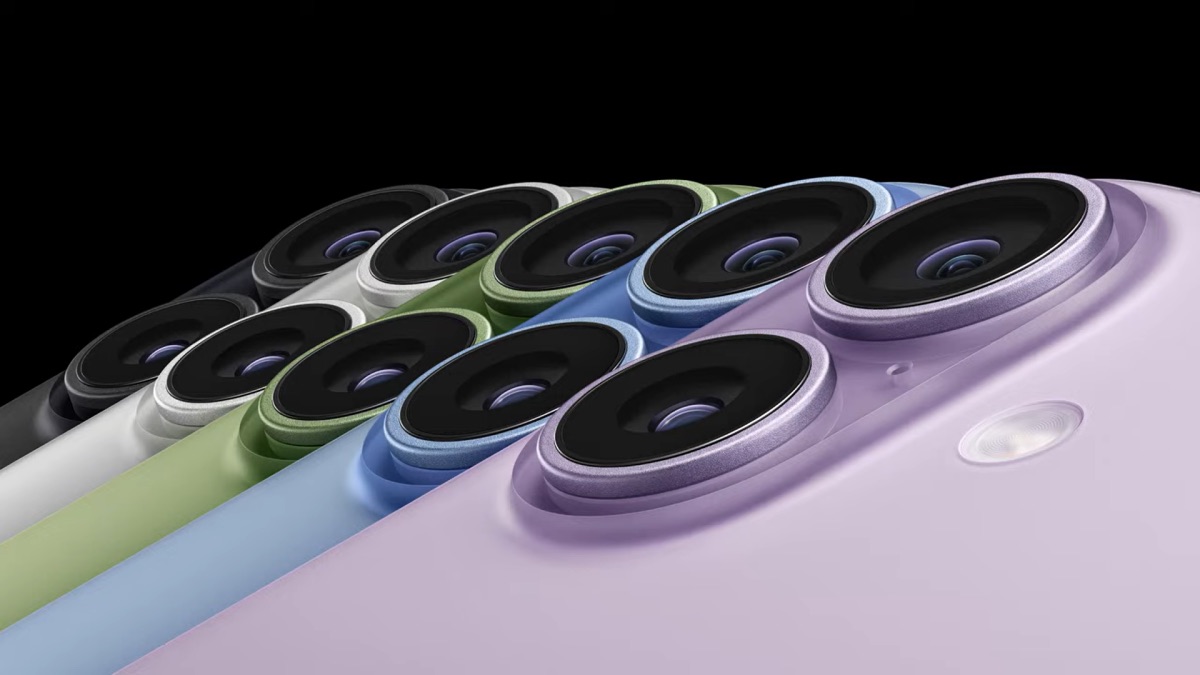
“Right from the start, we knew that we wanted to do this really highly stabilised video but we also wanted to do Dual Capture. And so not only did we have to do all this amazing, crazy stabilisation for one camera. We had to do it for two at the same time,” he added.
“The big enable for this, really, is Apple Silicon, along with the square sensor. You really need both of those to make these experiences land."
7. Becoming invisible
Ultimately, all the innovation serves a single, simple purpose: to get out of your way. Jon said the goal of the iPhone camera's camera was "to become invisible, to let you stay in the moment, while you capture your photos and videos."
The entire Center Stage feature set – from automatically rotating to landscape to maintaining stability while running – is technology designed to be effortless.
"The thing that we look for is that sort of invisibility where just kind of anybody can use it," Jon told us. “We don't build products for specs”, he said, adding “we build technology in a way that is packaged that everybody can use, and it becomes accessible, and it just becomes part of your daily life ".
In the case of the Center Stage camera, this technology is designed to allow you to focus on recording your memories and staying connected, without thinking about composition or settings, and it works. Really well.

Britta O'Boyle has been a technology journalist for over 10 years, covering everything from smartphones to the smart home, with plenty in between including wearables and beauty tech.
You must confirm your public display name before commenting
Please logout and then login again, you will then be prompted to enter your display name.
-
 Apple MacBook Pro (M5) review: Two months with the entry-level ‘Pro’ laptop – and why not to overlook it:
Apple MacBook Pro (M5) review: Two months with the entry-level ‘Pro’ laptop – and why not to overlook it:After two months using the MacBook Pro (M5) as our everyday laptop, here’s why it’s not just for the creatives and the dark horse of the line up...
-
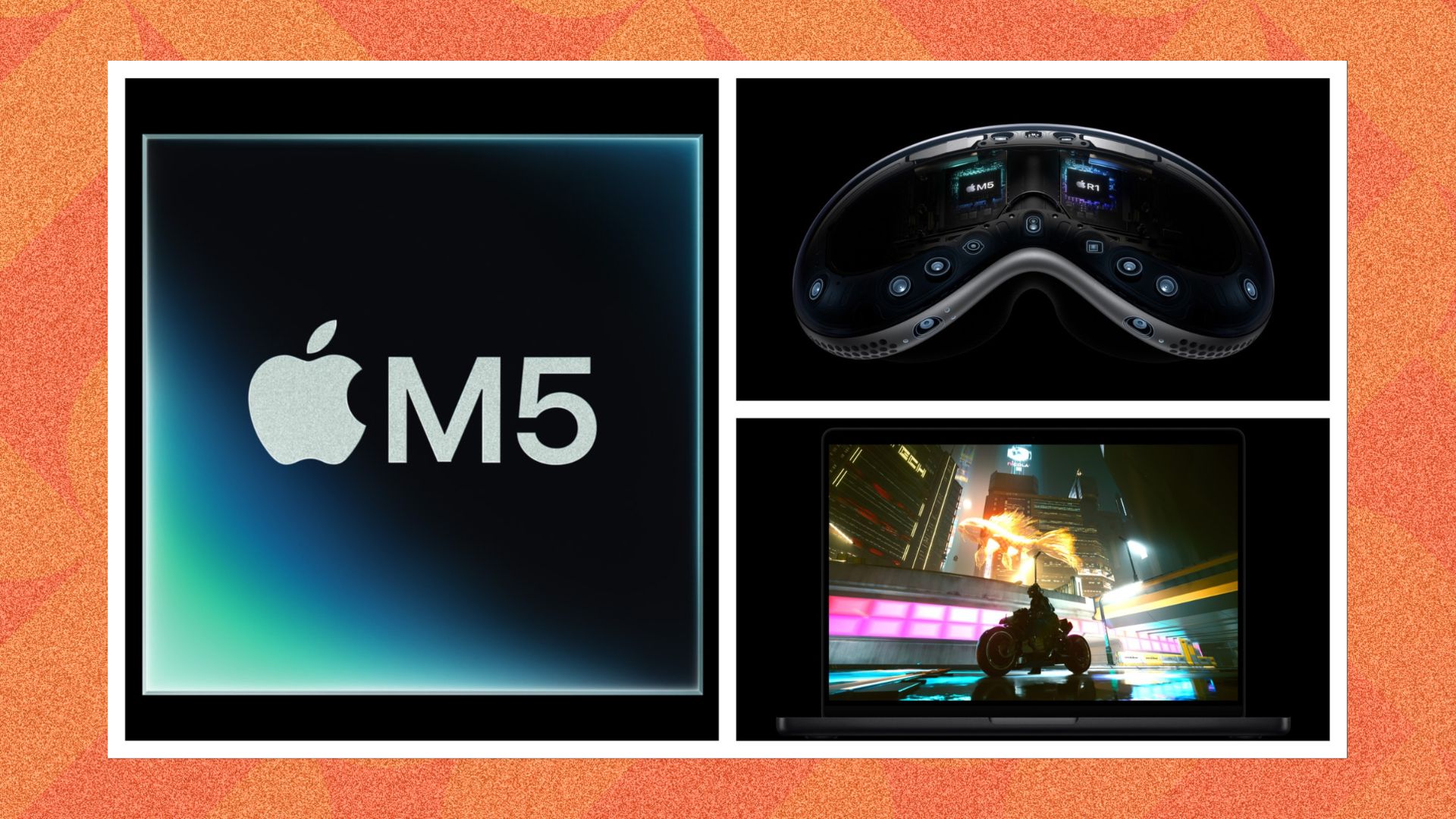 New M5 MacBook Pro, iPad Pro, and Vision Pro revealed: Everything Apple just launched
New M5 MacBook Pro, iPad Pro, and Vision Pro revealed: Everything Apple just launchedM5 means business
-
 Football Manager 26 Touch is coming to Apple Arcade – with Premier League power, women’s football, and a full-on makeover
Football Manager 26 Touch is coming to Apple Arcade – with Premier League power, women’s football, and a full-on makeoverWelcome to your newest obsession
-
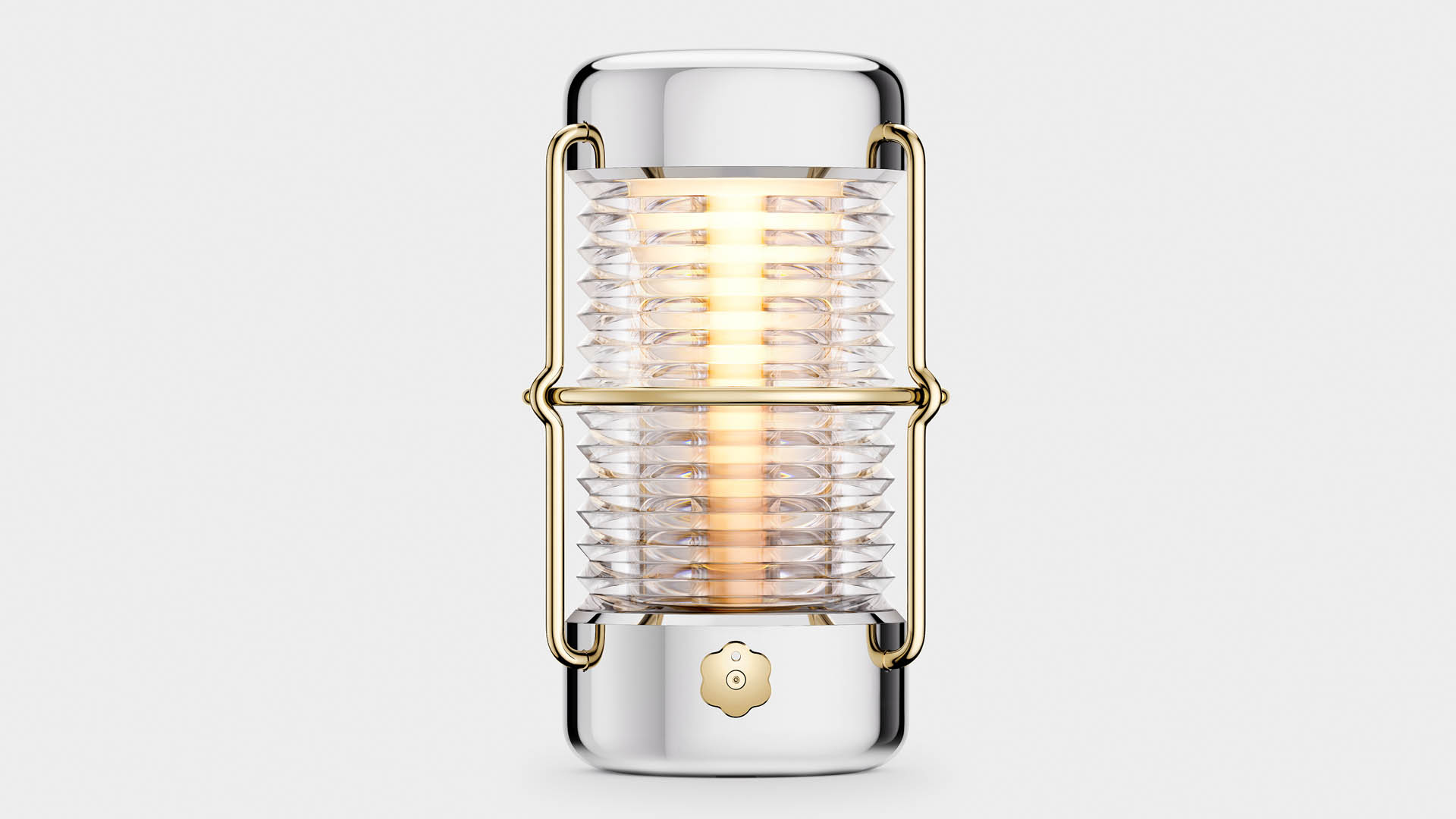 iPhone designer Jony Ive has made a... sailing lantern
iPhone designer Jony Ive has made a... sailing lanternI'm on a boat
-
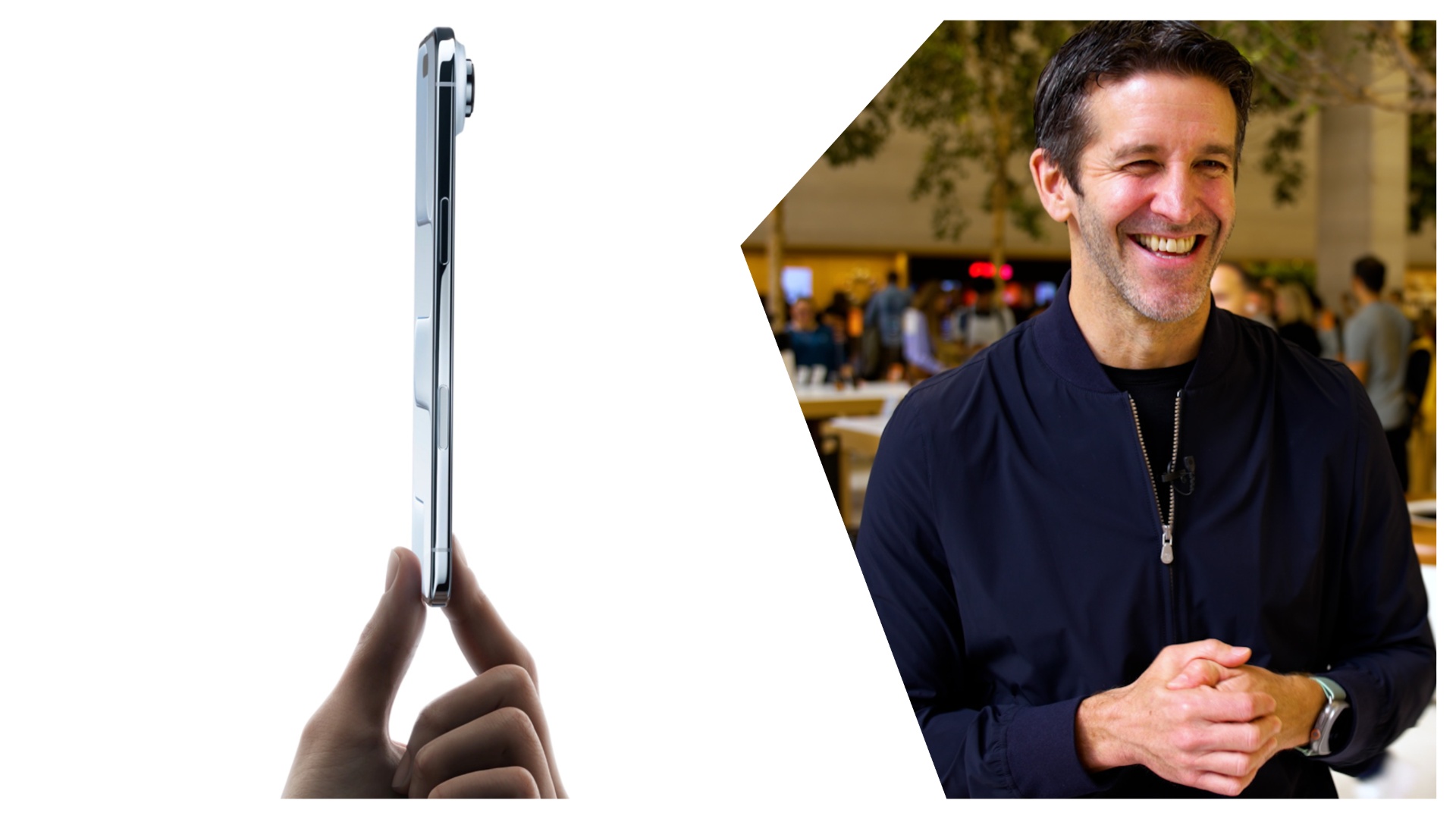 Exclusive: Apple's John Ternus on making the iPhone Air, his Watch streaks and what's still to come from Apple's design gurus...
Exclusive: Apple's John Ternus on making the iPhone Air, his Watch streaks and what's still to come from Apple's design gurus...Shortlist spoke to Apple's Senior Vice President of Hardware Engineering about the hurdles in creating the iPhone Air, how they could help future products... and how many emails were in his inbox...
-
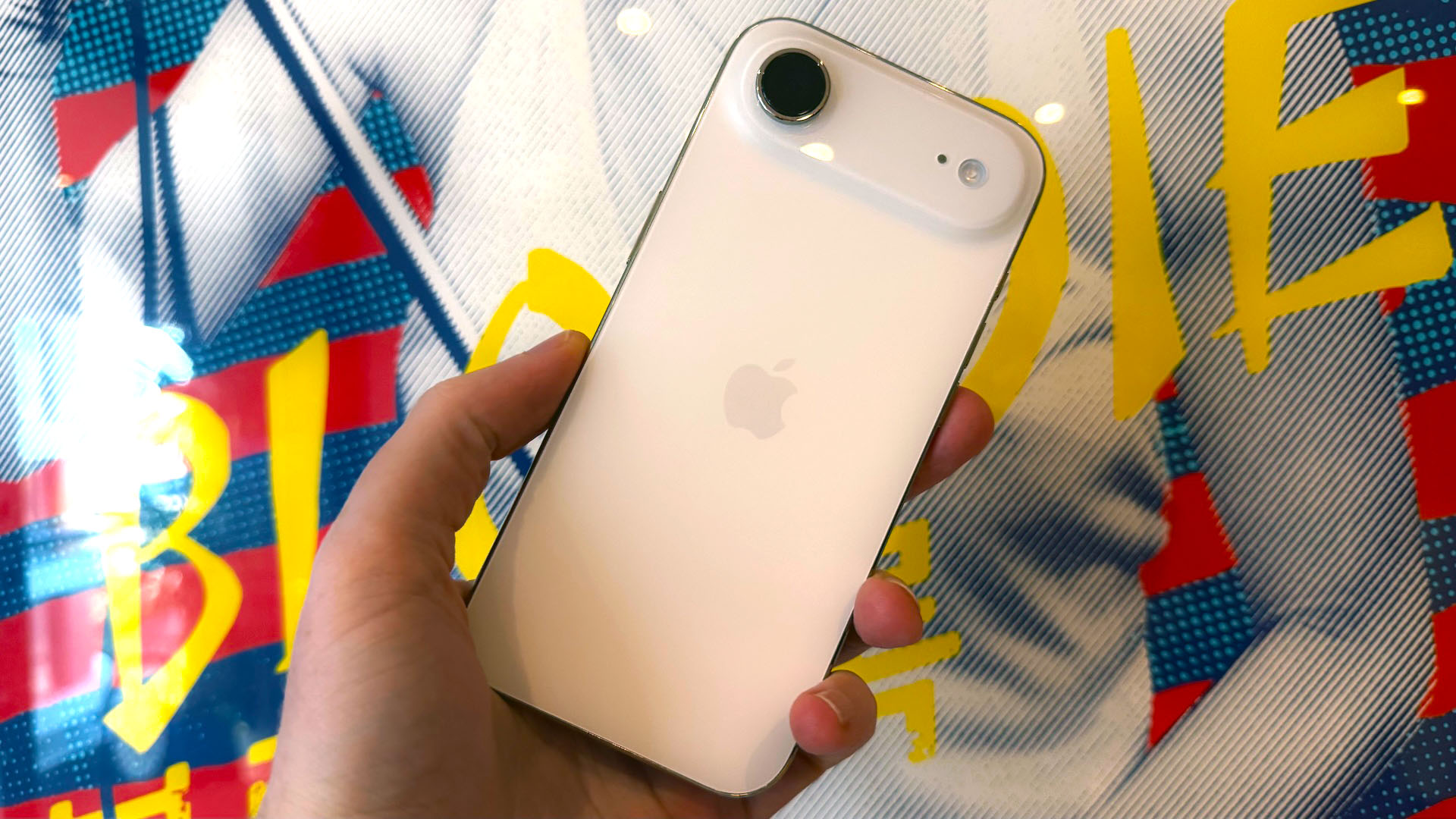 iPhone Air review: Apple’s cutting-edge is a slimline peek at the future of iPhone
iPhone Air review: Apple’s cutting-edge is a slimline peek at the future of iPhoneA new form factor that points to even bolder things to come...
-
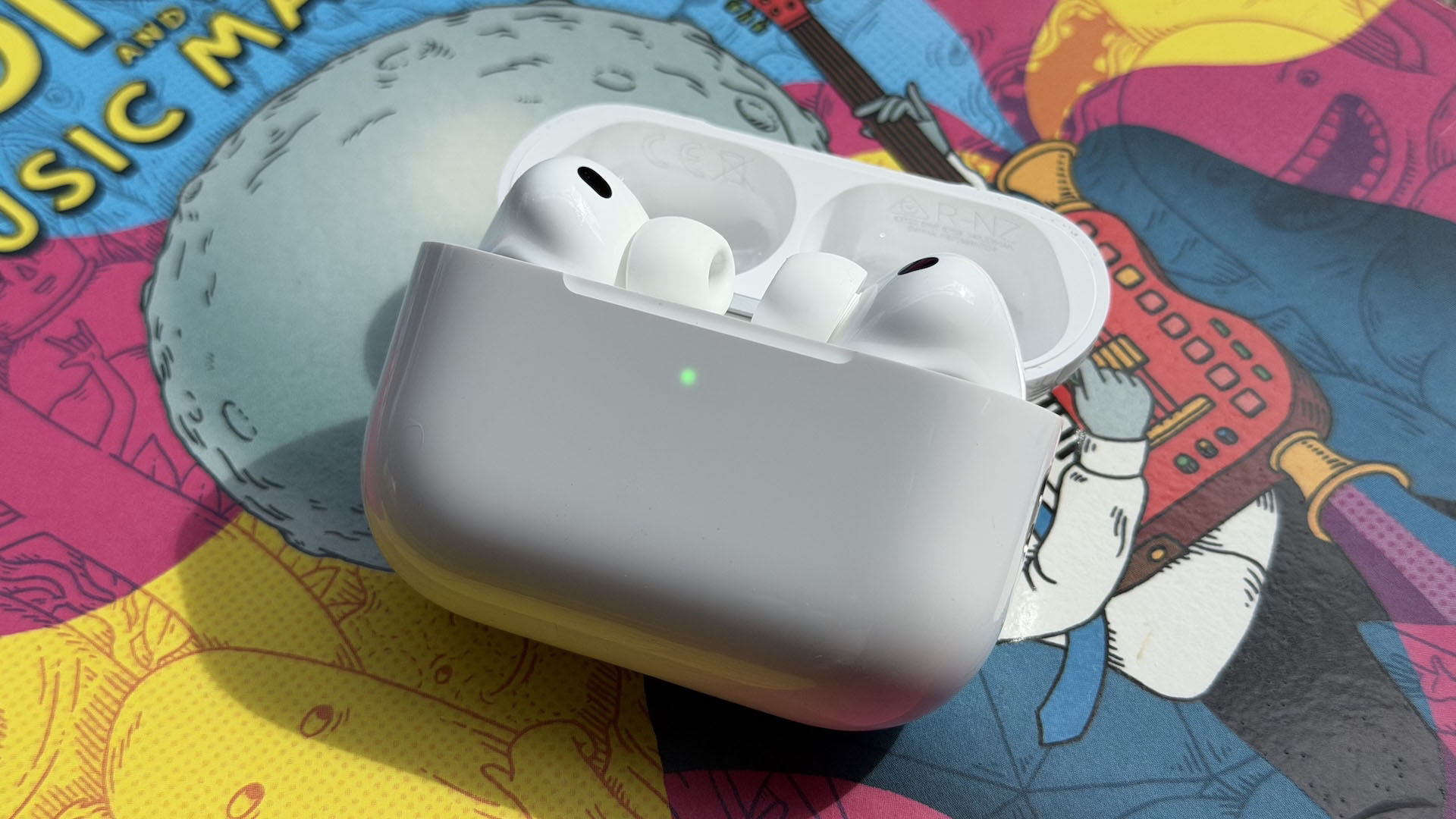 Apple AirPods Pro 3 review: The best in-ear noise cancelling you’ll ever not hear
Apple AirPods Pro 3 review: The best in-ear noise cancelling you’ll ever not hearStunning ANC, smart health features and better battery life make for an exceptional AirPods Pro update.
-
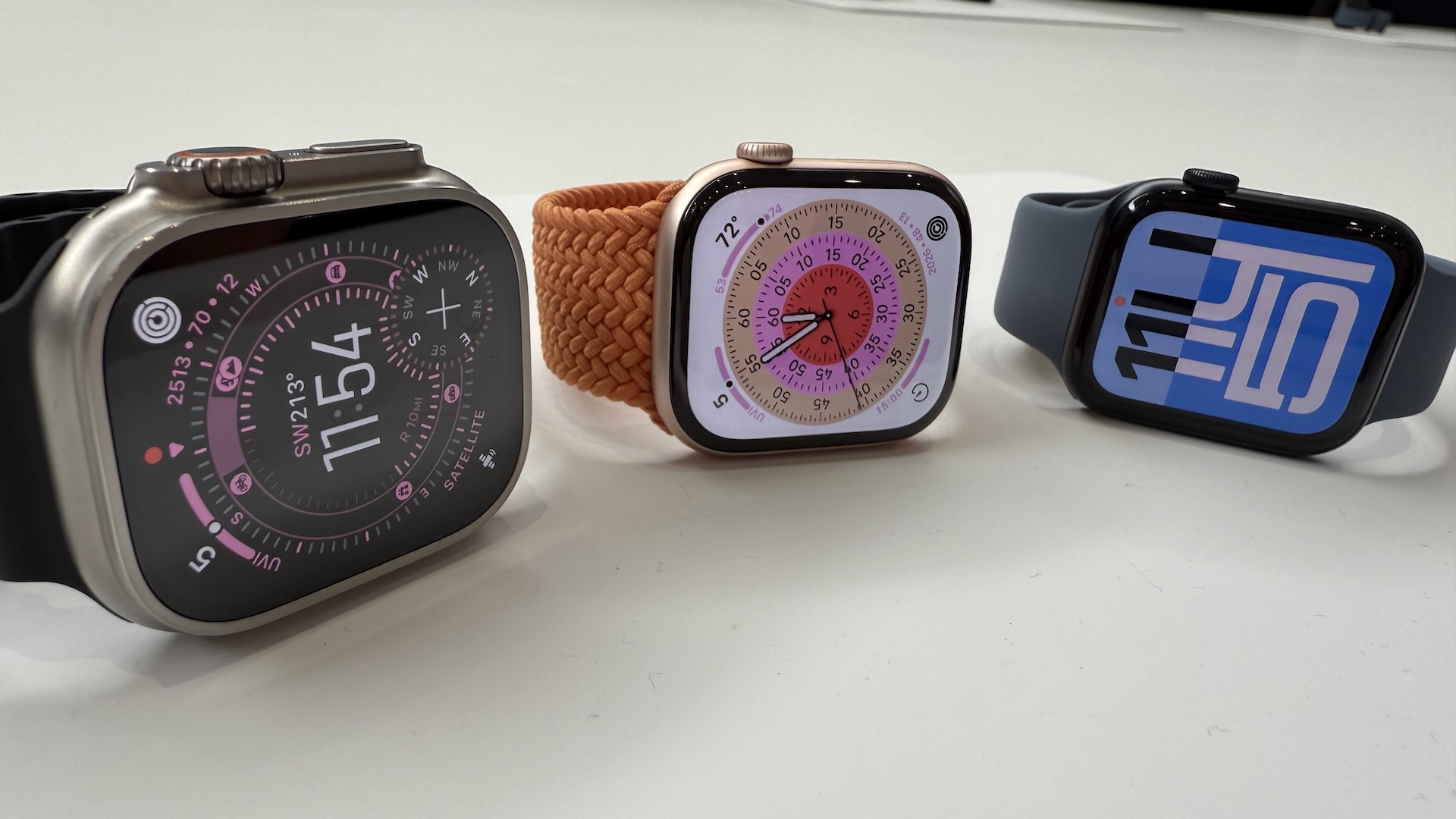 Apple Watch Ultra 3, Series 11 and SE 3 revealed: Hands-on comparisons between Apple’s all-new smartwatch line-up
Apple Watch Ultra 3, Series 11 and SE 3 revealed: Hands-on comparisons between Apple’s all-new smartwatch line-upOptions right across the board for those on the hunt for a new fitness tracker from Apple

